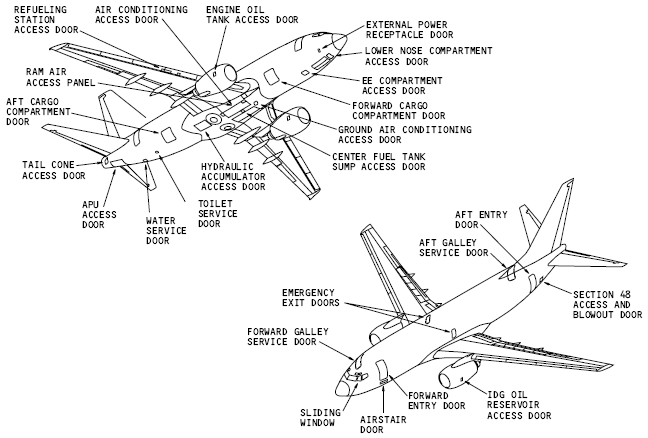 Servicing Panels
Servicing Panels
Home > Tech Photos > Walkaround > Servicing Panels
Contents
In this case water had seeped through an incorrectly fitted cap and froze behind the panel forcing it open. 15 minutes into the flight the cabin crew reported that they had no water available in the rear galley even though the quantity indicator was showing half full. Shortly later the forward galley also dried up.
After landing a 3ft icicle was observed from this hatch but it broke off before I could photograph it. During the 1hr flight, the water had frozen back up the line and into the tank. The aircraft was grounded for several hours while it was allowed to thaw out.
If this had been the toilet servicing panel, it would have formed the famous "Blue Ice", so called because of the chemicals used in the flushing agent.
Notice how the drain mast from the sinks is heated (the HOT decal) to allow water to flow out without icing problems.
All of the information, photographs & schematics from this website and much more is now available in a 374 page printed book or in electronic format.
*** Updated 05 Aug 2023 ***



